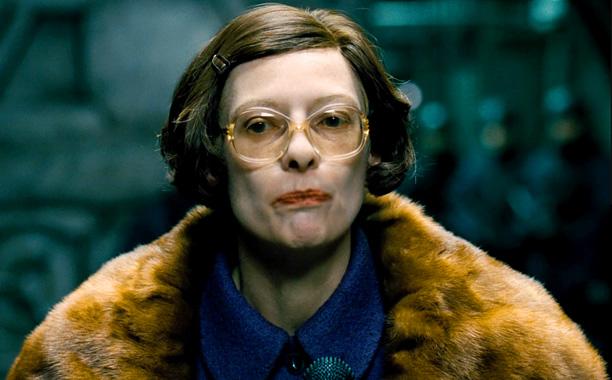
As a filmmaker, you aren’t solely responsible for other people’s interpretations of your work. There are arguments to be made that sometimes their messages have become muddled through rather contradictory portrayals – a story of true love motivated by youthful naivety, or the horrors of war undercut by badass action scenes. But sometimes, the viewer simply did not get it.
Timing could perhaps have been a factor; the cultural zeitgeist left little room for anything that went against the popular issues of the day. Sometimes the times were too sensitive, and even using controversial subjects, regardless how respectful the portrayal might be, closes the minds of its audiences.
In many cases, such films didn’t get a chance for a wide distribution due to fears from their producers. Other times, a notorious filmmaker failed to meet the expectations of his viewers, and in turn, his film became quickly rejected.
These eight films were all grossly misunderstood. They’re all prime examples of audiences who simply didn’t get it – and thus the films often become deeply underrated in turn. The philosophical undercurrents were often simplified by its viewers; sometimes it seems that people interpreted the message simply by looking at its story rather than taking in the plot’s various complexities.
In more tragic (or possibly hilarious) cases, people didn’t even grasp the extremely obvious satire – did nobody notice that Neil Patrick Harris’s character is wearing a uniform that resembles an officer of the SS?
If you yourself didn’t like these films, were turned off, offended, or bored by their initial message, hopefully this list will let you look at these films in another light – and the light that shines in a different direction can change everything.
8. Showgirls: This disgusting place called home
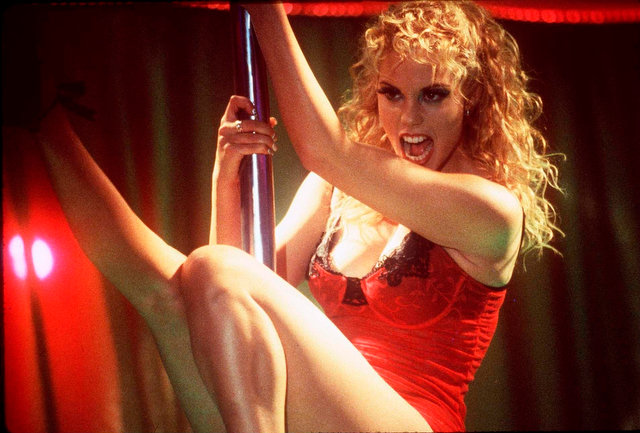
Reception: It’s certainly not a stretch to presume that the majority of the people who watched “Showgirls” in its opening week didn’t particularly think the film had anything meaningful to say. Besides some praise for its cinematography, the critics were positively hostile.
Even though Roger Ebert gave the film a lukewarm review, especially compared to his critical compatriots, he did accuse the film to be a series of ”masturbatory fantasies” by its screenwriter Joe Eszterhas.
Paul Verhoeven had previously worked with the screenwriter on “Basic Instinct”, a film fraught with controversy concerning its depiction of female sexuality. His previous films are certainly no stranger to explicit depictions of sexual situations, so some considered this film to be a step too far. A prime example of a filmmaker receiving too much creative freedom.
“Showgirls” had a taste of exploitation even before its release. It was the first big-budget NC-17 film at the time. On its release, viewers seemed revolted by its sleazy content. Feminists were appalled by its perceived misogyny. Others claimed this film to be nothing more than expensive pornography. The film would eventually win a record number of Razzie Awards.
A Mew Light: Many films found critical salvation in the world of having a cult status. “Showgirls” became one of them. At first, many adored the film for its hilarious awfulness; aside from the excessive nudity, there’s a great excess of over-the-top acting and cringe-inducing lines. But more and more, the film began to be taken more seriously. Legendary filmmakers such as Quentin Tarantino and Jim Jarmusch began to defend this film on its artistic merits, though Tarantino still refers to this film as a big-budget exploitation flick.
Some fans cite this film to be a spiritual remake of “All About Eve”, a Hollywood allegory, a satire on the traditional story of a naive women searching for stardom. A strange but interesting comparison could be made with 2014’s “Nightcrawler”. Like “Showgirls”, we have an unusual main character who is pursuing great ambition. In “Nightcrawler”, we follow the journey of a sociopath who wants to make it into the news business, while in “Showgirls”, we follow an impulsive and naive woman who wants to make it as a showgirl in Las Vegas.
Both of these journeys usually follow a more noble dream, such as in the recent film “La La Land”, where one character tries to make it as a jazz musician and the other as an actress. On the way, these characters usually encounter all sorts of spiritual corruption, but their souls remain intact.
These two films take a rather different path. In “Nightcrawler”, a sociopath has murdered his way to the top, a subversion of the rags-to-riches tale. In “Showgirls”, we follow a rather unstable woman in a world that many would consider morally corrosive. Both characters try to make it in a morally corrupt world.
In both worlds people are objectified; either for ratings or for their looks and youth. While the main character in “Nightcrawler” had no problem objectifying people for his selfish gains, our heroine in “Showgirls”, for all her flaws, is nothing more but a lost soul. She seems to be forever running from some mysterious past which is never revealed to us.
But this is an old story, told in many different ways, with dreams warped by something painful in the past. People run away from something terrible and have now place to call home. They drift until they finally find a place to call home, a place where people seemed to give them attention or some modicum of respect – even if it’s the entirely wrong one. It’s a place where they have an identity, where they are someone. You may laugh at such a pitiful dream, but for some people this is all they have.
And even though Verhoeven is laughing with us, the humanization of such a lost soul – souls that Las Vegas and especially Hollywood is full of – makes this film much more than a mere guilty pleasure.
7. High-Rise: Those who perish in the bubble
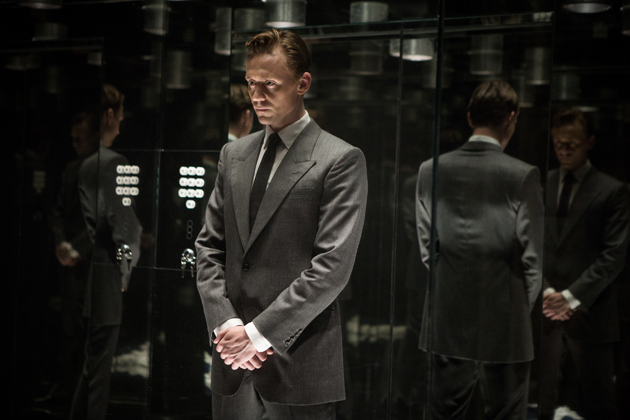
Reception: On the surface, “High-Rise” seems to be a reflection of class warfare. The film follows several residents of a tower block where the the classes are personified by the floors in which they preside; the rich live on the top floors while the poorest live all the way down on the bottom.
There’s even a scene where the rich have a dinner party in which they are dressed as aristocrats. Furthermore, there seems to be enough examples of crass snobbery and excessive wealth to justify the claim that “High-Rise” is a reflection of the burgeoning tensions between the different classes. You can already see many libertarian or right-wing thinkers shudder in their boots.
A New Light: The film is an unbelievably faithful recreation of the novel by J.G. Ballard. Anyone who is privy to Ballard’s literary works knows that you can’t do them justice through simplistic interpretations. Seeing as Ballard has conservative aspirations himself, to claim that this film is a liberal tirade against the upper-class is nonsense.
Certainly a case can be made that the film addresses the inevitable tensions between the classes in a capitalistic utopia. But if the film satirizes anything, it’s not merely class warfare – it’s the notion of utopia itself. Our hopeless pursuits of a perfect society is bound to fail; it’s a dream that we keep waking up from, again and again.
The hopeless dreamer of this film is architect Anthony Royal (played by the always reliable Jeremy Irons) who by having constructed the high-rise, hopes to unite its tenants of different classes by satisfying their every consumerist desire. But things keep going wrong, and one of Ballard’s recurrent themes of the intimate fragility of society comes into play. Soon enough, the civilized consumer morphs into a savage hunter.
Ballard, who spent his childhood amidst Japan’s invasion of China, knows only too well how fragile our so-called civilized society really is. By claiming that this film is merely about class warfare is sorely missing the point.
Many point back to the end of the film, where we hear a transcript of a speech by Margaret Thatcher in which she tells her audience that a society can never be free without a free market. This notion that a free market is the ultimate solution to ideological warfare became especially popular after the fall of the Soviet Union.
But it’s turned out to be just another dream, as was proven innumerable times, possibly never better than with the 2008 financial crisis. A complete freedom of market forces does not guarantee stability but even so, there are more than enough believers that will continue to propagate this dream.
Unfortunately, this will bubble will inevitably pop and lead to the destruction of countless lives. And like the tenants of Ballard’s “High-Rise”, if enough things go wrong, people will revert back to tribalism and the comfortable familiarity that comes with anarchy.
6. Starship Troopers: Our meaningless sacrifices
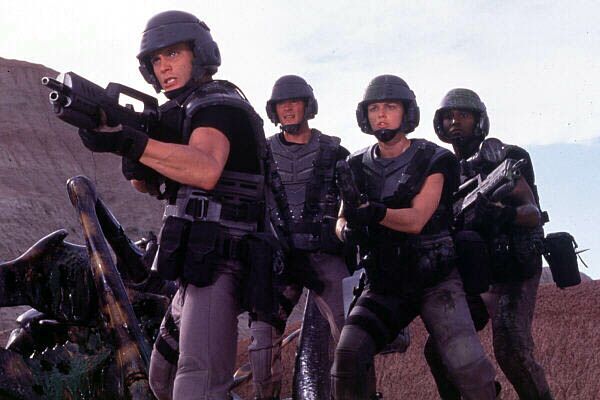
Reception: “Starship Troopers”, though not as heavily slammed as “Showgirls”, was loathed by various critics alike. Its detractors considered the film juvenile and tailor-made for teenage boys who just want mindless gore and spectacle.
Its biggest condemnation laid in how it seemed to glorify militarism, in its depiction of heroic soldiers battling a common enemy, in the form of huge alien bugs.
A New Light: In one of the most infamous scenes of 1987’s “RoboCop”, we witness the violent demise of a corporate suit during a presentation of one of their robotic prototypes. Instead of feeling some remorse that one of their products caused the death of someone they’ve probably worked with for some time, the CEO rails at his corporate underling about this failure’s immense cost.
It’s very obvious in this scene that Paul Verhoeven was spoofing corporatism that became rampant at the time of its making. This alone should have given the viewers of “Starship Troopers” a hint that maybe they shouldn’t take it too seriously. Verhoeven has a habit of sneaking in social critique (often at the expensive of American culture) in his commercial ventures. His films, however, were successful despite many people missing its satirical value (even “Showgirls” recouped much of its losses afterward with the home video and rental markets).
The misunderstanding of “Starship Troopers” seems baffling now. On nearly every account, the film’s satire is obvious – listen to Michael Ironside’s character giving a lecture on the failure of democracy, about the social scientists who needed to be uprooted by militaristic action. The news footage speckled through the narrative clearly gives an indication that the world these people live in is under autocratic rule. In the military propaganda footage, kids are even encouraged to grab a big weapon and join the fight.
A journalist who gets brutally halved in the film even hints that it was human intervention that caused the war with the bugs in the first place. The opening scene of the film was an adaptation of notorious Nazi propaganda film “Triumph of the Will”. To make the case even more obvious, characters walk around in uniforms that resembles those of SS officers in Nazi Germany. It couldn’t have been more obvious.
The film is a complete antithesis to its original novel by Robert Heinlein, who wrote the novel to honor the sacrifices of the military. In the film, it seems very clear that all the countless deaths are just there to continue a system of endless violence. It’s not about bringing forth peace, it’s about sustaining an autocratic rule by distracting the public with a common enemy – a trick used by countless despots, from both the past and the modern world alike.
5. American Psycho: The natural consequence of nihilism
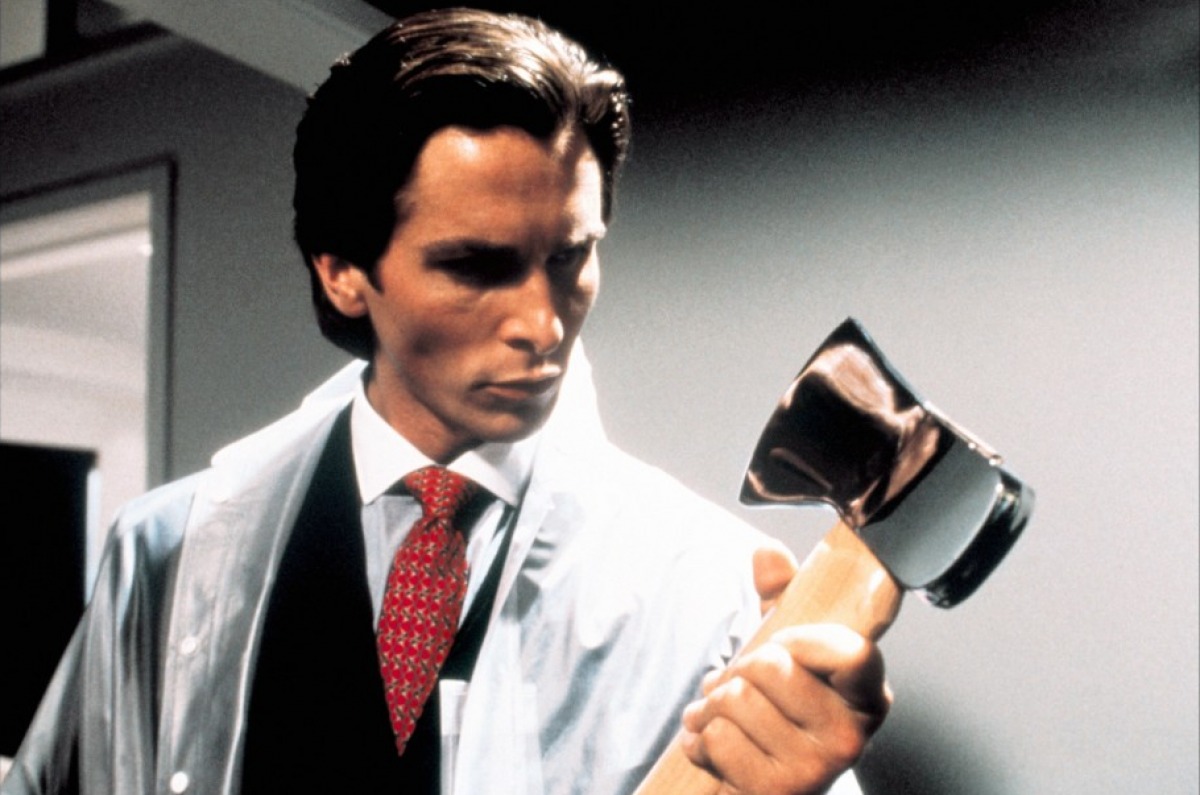
Reception: Since it was based on a deeply controversial novel, it only seemed fair that the film would receive some of its appropriate amount of polemic discourse. The novel featured countless (and rather detailed descriptions) of murder and mayhem – young and old alike, not to mention the sordid antics of necrophilia – committed by a young investment banker named Patrick Bateman.
The novel was either banned or restricted in its availability for the possible harm it might do to minors. Noted feminist Gloria Steinem opposed the novel for its depictions of violence against women, despite the fact that the film did not really discriminate regarding violence toward any gender or age. In a funny turn of events, she turned out to be the stepmother of Christian Bale, who went on to star in its cinematic adaptation.
Nevertheless, seeing as the novel and film were filled all manner of grotesque acts (though comparatively and probably for the best, the film has significantly reduced the violence), people would inevitably miss the deeper message that lay in both the novel and its successful adaptation.
A New Light: If you can see past the violence, one might notice that this film is actually rather silly. While it does have its fair share of uncomfortable violence, the film constantly mocks its serial-killing lead and the vapid world with which he surrounds himself.
However, even if you did notice this, many seemed to have been confused by the end, when Bateman confesses a murder to a colleague, who then answers that he saw this victim just recently. To many, this seemed to hint that most of the film, specifically the murders, were in Bateman’s head all along.
This wasn’t the intent of director Mary Harron at all. The film was not intended to be a serious psychological profile of a serial killer who has the economic means to get away with an unquenchable appetite for murder. Instead, it’s a pointed satire about having the means to get away with everything and, in the process, lose all meaning of self.
The fact that someone saw Bateman’s victim somewhere else was not an indication that Bateman was hallucinating the whole affair. It means that he confused Bateman’s victim with someone else, something that happens constantly in the novel and the film. People constantly call people by different names, and confuse this person with that person. People have become interchangeable in this surface-obsessed world where real relationships have become a farce, just another commodity of which to show off.
In an attempt to reaffirm some deeply-seethed humanity hidden somewhere in his overbearing psychopathy, he realizes that in the sick world he lives in, there is no chance for absolution because nobody cares. In this world where status and appearances mean everything, nobody is interested in who you really are, even if you spend your free time slaughtering and mutilating people. His confession was therefore meaningless.
Naturally, since both the novel and the film take place in the 1980s, it naturally satirizes the excesses of the time. The engineers of Reaganomics did not only create abundant wealth for their already rich elites, but also a sense of meaninglessness among those who have too much and don’t know what to do with it.
The film serves as a reminder that such a world still inhabits pop culture. We might not idolize serial killers, but we still celebrate our wealthy elites, no matter the extent of their vapidity – even promoting them as heads of state. In a world where status and appearances mean more than spiritual well-being, nihilism becomes a natural consequence.